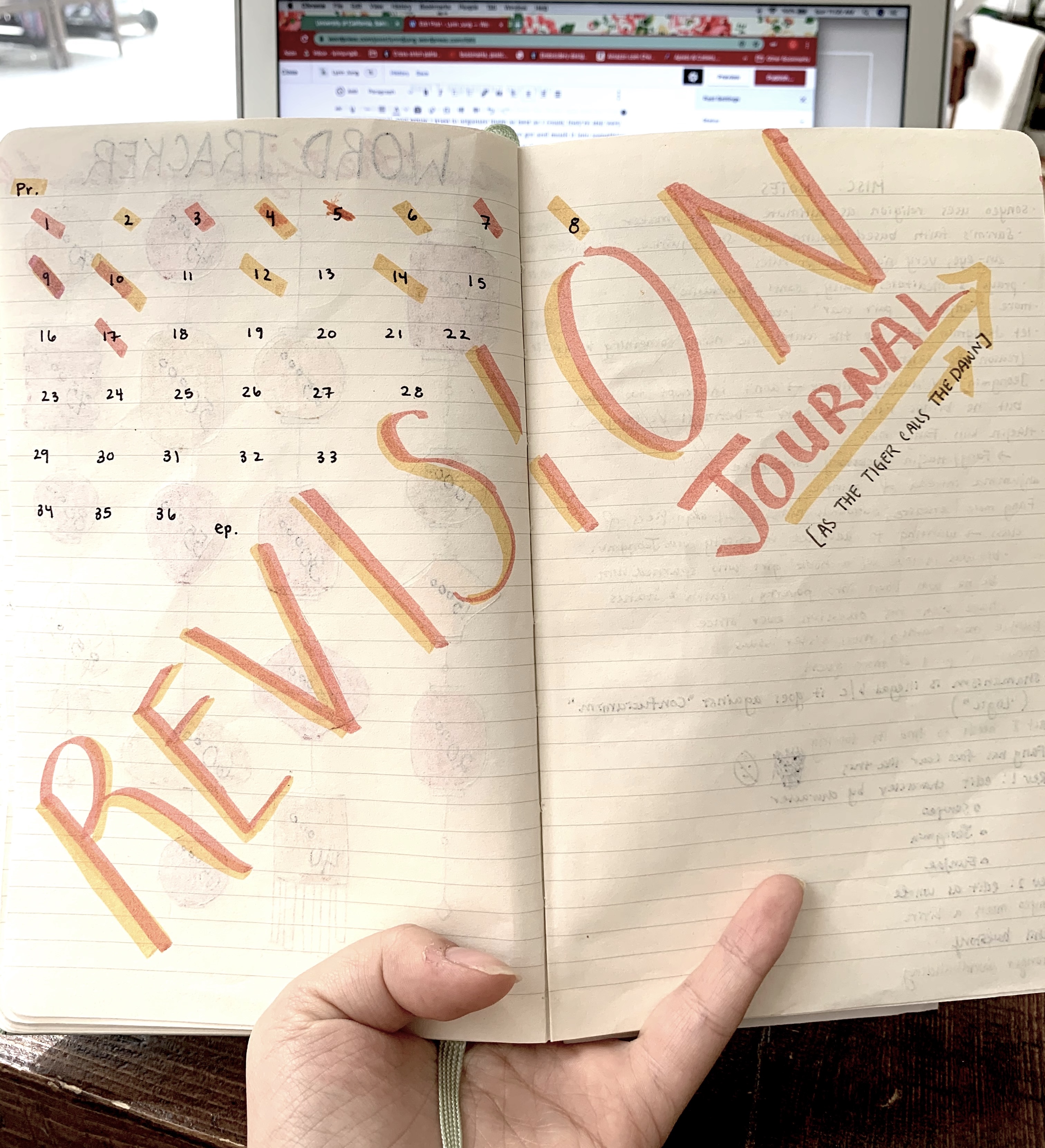Previous: Revise With Me: How I’m Fixing my YA Fantasy (Part I)
Welcome back to my adventures in revising, or as I’ve fondly been referring to it as, fixing up this goddamn book so it’s readable. This is part 2 of my on-going documentation of the revisions process for “TIGER”, a secondary world fantasy that’s Miyazaki meets the Odyssey meets Korean folklore. Last time I collected my thoughts on the manuscript and started my read-through. Now that I’ve finished all that, it’s time to move on to the next stage.

part 1: organizing my notes
While reading through my manuscript, I took notes in both the Notes app and my trusty writing journal, and while I tried to organize them as best as I could, they’re still rather haphazard. My objective here is to gather everything I’ve got and mush it into something accessible, while simultaneously figuring out exactly what developmental changes I’ll be making this round.
When organizing my notes, I ended up going scene-by-scene, since most of my revisions at this stage are plot and character related. I did this by dedicating a notecard to each scene, jotting down the basics of what occurs in the scene (or will occur, if I’m changing it) and miscellaneous edit notes beneath. I approached them act-by-act, so I finished up my act one notecards before revising those chapters, and then so on and so forth.
Another thing I did at this stage was set soft goals for myself. My goal was to try to revise 5k a day on work days, and 20k a day on non-work days. I also set up a little progress card in my revision notebook. Every time I finished revising a chapter I got to mark it off, and because I like to-do lists and that small burst of accomplishment I get every time I highlighted one of those little numbers.


part 2: the nitty-gritty of revising
Does anyone ever actually talk about the actual mechanics of revisions? Like, are there rules? Do you just work directly on the original document? Set up a whole new one and copy/paste or rewrite as needed? My usual technique is to set up a new document, keep the other one open on the side, and tackle each chapter individually. I copy and paste the scenes that can be preserved or only need light editing, and rewrite as needed.
So far, focusing on one thing at a time has been helpful. Chapter-by-chapter, scene-by-scene. This particular book has 3 POVs, and while it’s not horrifically long it is a bit complicated, and my revision plans threw a whole new angle into that with new plot threads and character relationships. And while I’m trying not to focus on line edits so much in this developmental stage, I’ve been tweaking some of the prose here and there because after this round of revisions, I’ll be sending the book off to beta readers! YIKES.
Anyway, I actively cut, rewrote, and edited this book with the split screen method for a little over three weeks. The developmental revisions turned out to be much more extensive than I’d originally anticipated, but I spent that first week really hunkering down to make a clear plan for myself, which helped streamline the process. What was less helpful was how absolutely bananas my work schedule became in that month-ish span. 😦

part 3: getting the house ready for guests
Once my revisions were done, I got ready to send the manuscript out to betas! I used to be highkey neurotic about polishing up my chapters before letting anyone see them, but I’m forcing myself to work on a time crunch this time around, which has done me the favour of forcing me to chill the hell out. For this round of revisions, I ended up with around eight betas, which included my three trusty alpha readers who wanted to do help with a second pass.
Before even sending out the manuscript, I prepped a list of around a dozen generic big picture questions for my readers. This is an important step, because I find if I don’t ask after specific things readers will often hyperfixate on line edits or focus too much on giving me positive feedback. I appreciate the intentions of compliment sandwiching your critique, but I’m a busy bee and I need to get to the meat of things!
I won’t post my list of questions here, because I got a big chunk of it from other writer’s lists and the ones I didn’t are rather specific to my story. Generally, I wanted to know if there were any parts where the reader started to skim, if the characters resonated and felt like people, if the worldbuilding was clear, and if the plot was easy to follow. I also always ask my readers if there are any existing pieces of media the book reminds them of—I’m super bad of thinking up comps on my own, so there’s a little trick for ya! Make other people do all the work!
Anyway, that about covers it. To summarize, I made edits to fix the most glaring developmental errors, did a quick line edit pass, and sent the book off to my beta readers to see if it’s working so far. Next time, I’ll talk about parsing beta feedback and figuring out which advice is worthwhile… and which advice isn’t.
xx
twitter: @sweater_giraffe

Leave a comment